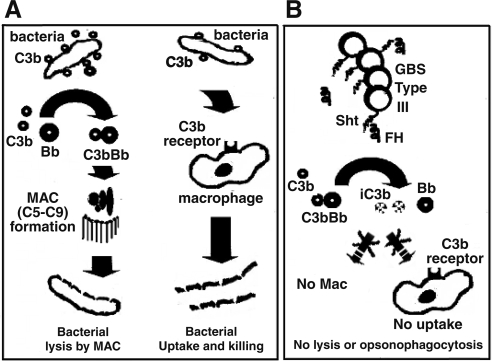Figure 5.
Diagrammatic representation of the role of SHT in the evasion of complement attack by GBS. A) Deposition and activation of C3 on bacteria through the alternative complement pathway. Active C3b binds serum factor B to form C3bBb that helps activate C5. Active C5b binds complement proteins C6 to C9 to form the MAC. MAC makes pores in the bacterial membrane, leading to its lysis. Furthermore, bacterial-bound C3b can also take part in opsonophagocytosis by binding to the C3b receptor present on macrophages or neutrophils. B) Depiction of how SHT of GBS type III binds FH of serum to dissociate any C3b–factor B complexes and inactivate C3b to iC3b. Such inactivation helps bacteria survive because of the inability of the inactivated complement to form MACs. In addition, the inactivated C3b also fails to bind macrophages, leading to lower levels of bacterial uptake by killer cells.

